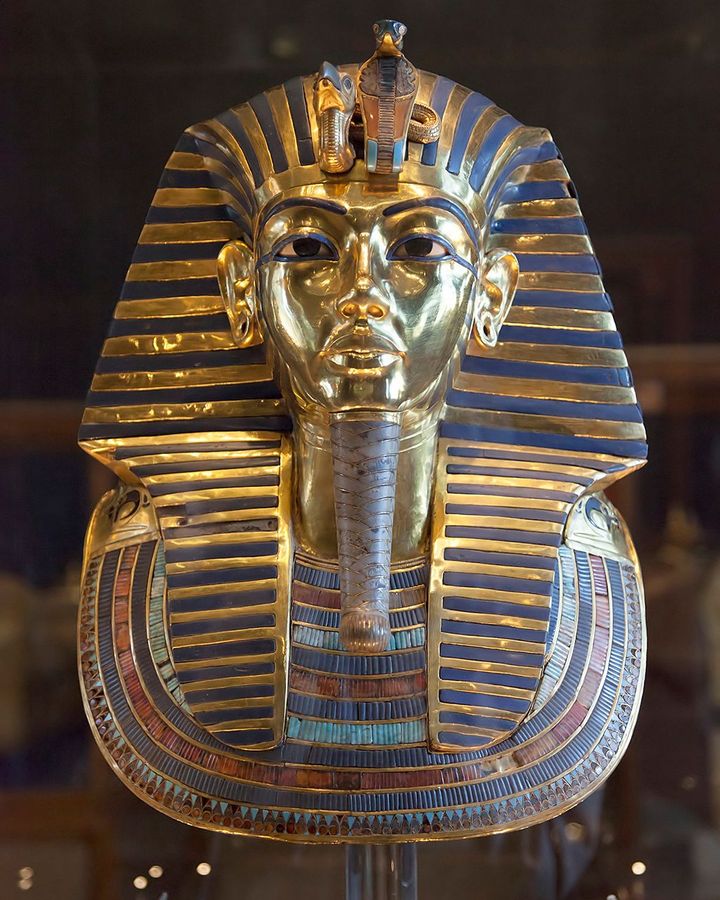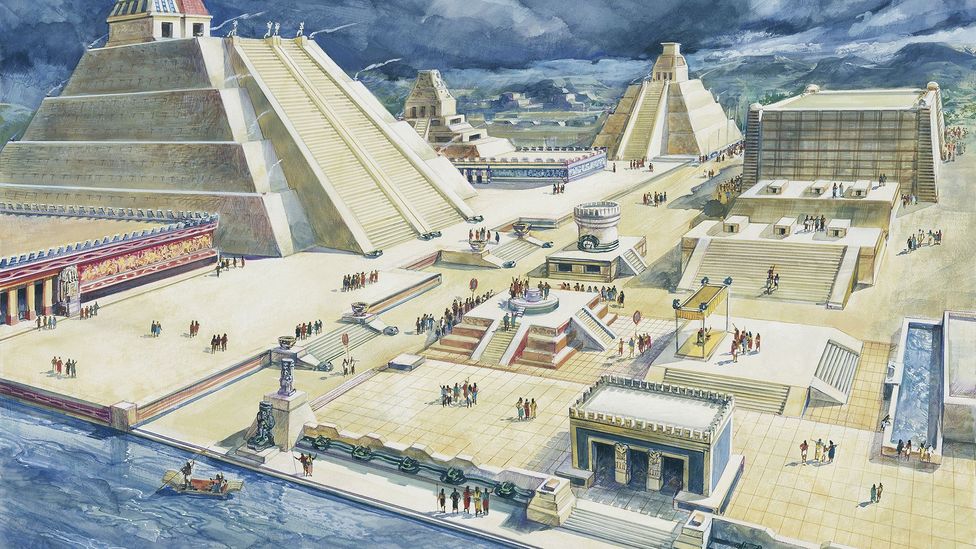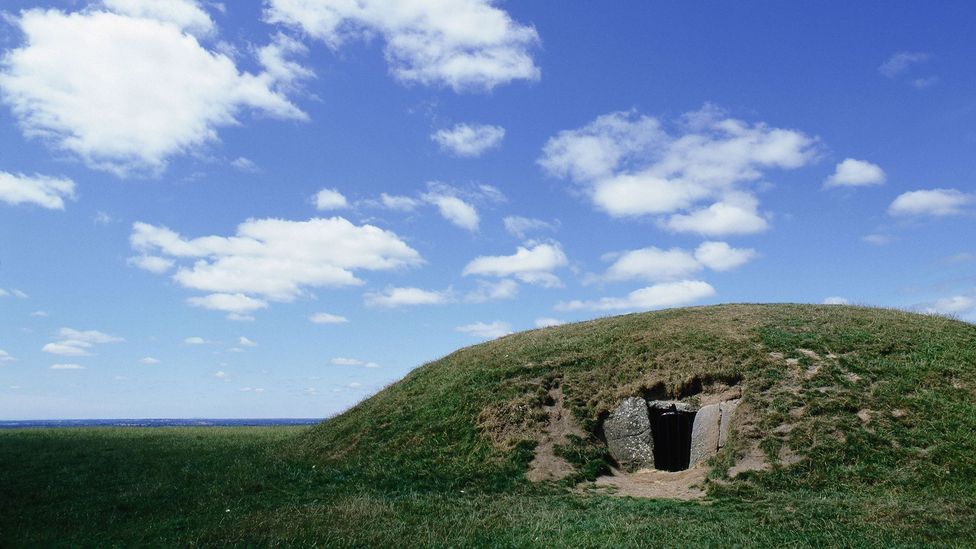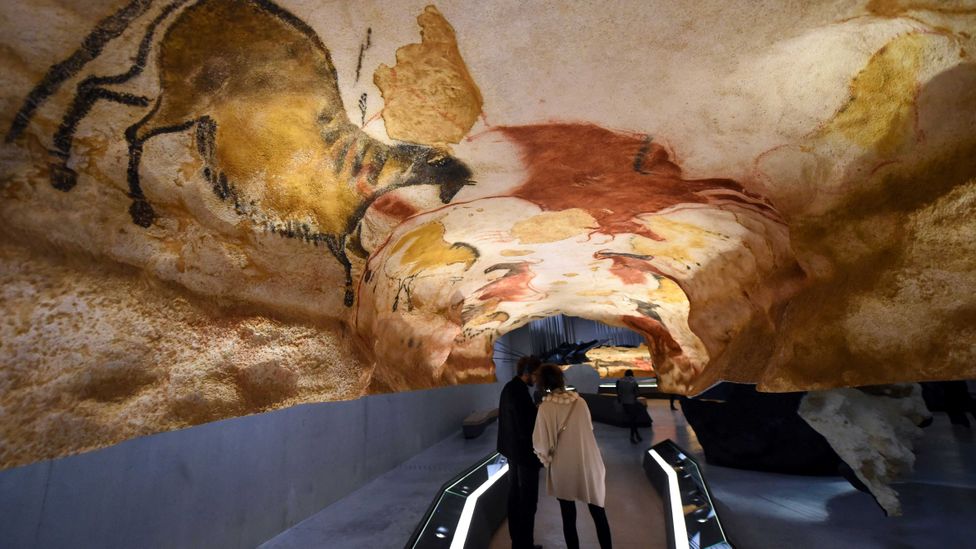It happens all the time. You read an amazing book, one so packed with wisdom that you think it’s going to change your life forever. Then…it doesn’t. Why? Because when you’re finally in a situation where you could use its insights, you’ve completely forgotten them. Time is our most valuable resource, so we shouldn’t waste it. The investment we make in reading should have a positive, lasting impact on our lives.
Consuming information is not the same as acquiring knowledge. No idea could be further from the truth.
Learning means being able to use new information. The basic process of learning consists of reflection and feedback. We learn facts and concepts through reflecting on experience—our own or others’. If you read something and you don’t make time to think about what you’ve read, you won’t be able to use any of the wisdom you’ve been exposed to.
One of the reasons that we read books is because they offer a rich tapestry of details, allowing us to see the world of the author and go on their journey with them. Our brains can learn not only the author’s ideas but also when their conclusions about how to live are likely to work and when they are likely to fail (thanks to the vast amount of details that authors share about their experiences and thought processes).
But if you only remember six things after reading this article, it should be the following truths about reading:
- Quality matters more than quantity. If you read one book a month but fully appreciate and absorb it, you’ll be better off than someone who skims half the library without paying attention.
- Speed-reading is bullshit. Getting the rough gist and absorbing the lessons are two different things. Confuse them at your peril.
- Book summary services miss the point. A lot of companies charge ridiculous prices for access to vague summaries bearing only the faintest resemblance to anything in the book. Summaries can be a useful jumping-off point to explore your curiosity, but you cannot learn from them the way you can from the original text.*
- Fancy apps and tools are not needed. A notebook, index cards, and a pen will do just fine.
- We shouldn’t read stuff we find boring. Life is far too short.
- Finishing the book is optional. You should start a lot of books and only finish a few of them.
Let me explore multiple strategies for getting more out of what you read. You don’t need to use all these strategies for every book. Using just a couple of them, whether you’re trying to learn a new philosophy or reading a work of fiction, can help you retain more and make deeper connections.
What you read can give you access to untold knowledge. But how you read changes the trajectory of your life.
Active reading
“Every time I read a great book I felt I was reading a kind of map, a treasure map, and the treasure I was being directed to was in actual fact myself. But each map was incomplete, and I would only locate the treasure if I read all the books, and so the process of finding my best self was an endless quest. And books themselves seemed to reflect this idea. Which is why the plot of every book ever can be boiled down to ‘someone is looking for something.’” —Matt Haig, Reasons to Stay Alive
Now, if you’re only reading for fun, or if you don’t want to remember what you read, this article doesn’t apply. Sometimes reading is entertainment, and that’s wonderful. But if you want to get some valuable knowledge out of a book, the first step to getting more out of what you read is being active. So what is active reading?
Active reading is thoughtfully engaging with a book at all steps in the reading process. From deciding to read right through to reflection afterwards, you have a plan for how you are going to ingest and learn what’s in the book.
Books don’t enter our lives against a blank slate. Each time we pick up a book, the content has to compete with what we already think we know. Making room for the book, and the potential wisdom it contains, requires you to question and reflect as you read.
For example, you might ask yourself:
- How does the book relate to topics you’re already familiar with?
- What about the book challenges you?
- What are your preconceived notions about its subject, and how can you put them aside?
Active reading helps you make connections within your latticework of mental models. Connections help retention.
Think back to the books you studied in school, if you did. Despite the passage of time, many people remember a surprising amount about them. Even if the details are fuzzy, we might at least be able to recall the basic plots, main characters, notable themes, and motifs. Why? Well for one, we probably didn’t just passively read those books. We were forced to actively read them, perhaps complete with class discussions where we took turns reading parts aloud, acted out scenes, or maybe even watched film adaptations. No matter how long it has been since we set foot in a classroom, many of us probably remember Animal Farm.
Your first goal when reading is to not be a passive consumer of information. You want to get better, learn something, and develop your critical thinking skills. If you had a good English teacher in school, you will have already seen this in action.
To get the most out of each book we read, it is vital we know how to record, reflect on, and put into action our conclusions.
A lot of success in reading boils down to preparation. What you do before you read matters more than you think. Here are five strategies to help you plan and get in the active reading frame of mind.
Choose Great Books
“Think before you speak. Read before you think.” —Fran Lebowitz
There are no rules when it comes to choosing books. We don’t have to read bestsellers, or classics, or books everyone else raves about. This isn’t school and there are no required reading lists. In fact, there’s an advantage to be gained from reading things other people are not reading, because you will gain knowledge and insights that not everyone else has. Focus on some combination of books that: 1) stand the test of time; 2) pique your interest; or 3) challenge you.
The more interesting and relevant we find a book, the more likely we are to remember its contents in the future. For older books or those that have been translated, check which version is considered to be the best.
Get some context
A good place to start getting context is by doing some preliminary research on the book. Some books—for example, A Confederacy of Dunces by John Kennedy Toole and Paradise by Toni Morrison—have a richer meaning once we know a bit about the life of the author and the place and time in which the novel was set.
For older books, try to understand the historical context. For books written in an unfamiliar country, try to understand the cultural context. Some helpful questions to ask include the following:
- Why did the author write this?
- What is their background?
- What else have they written?
- Where was it written? Was there anything interesting about the writing process?
- What was the political, economic, and cultural situation at the time of writing?
- Has the book been translated or reprinted?
- Did any important events—a war, an economic depression, a change of leadership, the emergence of new technology—happen during the writing of the book?
- What was happening in the world during the time the novel is set? This is particularly useful to ask when it comes to fiction.
You don’t need to do this, but if you want to get a lot out of a book it will be a major boost.
Know your why
What are you reading this book for? Entertainment? To understand something or someone you don’t know? To get better at your job? To improve your health? To learn a skill? To help build a business?
You have to have some idea of what you want to get from the book. If you don’t read with intention, what you read will never stick. If you are looking for business insights, read for that.
Periodically ask yourself questions like: What can I learn from this story? What in this book parallels or pertains to my own challenges? What are the differences? How might I apply some of the insights I’m picking up?
Intelligently skim
Before starting to read a book (particularly nonfiction), skim through the index, contents page, preface, and inside the jacket to get an idea of the subject matter. Use this information to situate your expectations and refine what you are looking for as you read.
The bibliography can also indicate the tone and scope of a book. Authors often read hundreds of books for each one they write, so a well-researched book should have a bibliography full of interesting texts. After you’ve read the book, peruse the bibliography again and make a note of any books you want to read next.
Match the book to your environment
Although it’s not always practical, matching books to our location and circumstances can be powerful. Books will have a greater resonance as they become part of an experience rather than just supplementing it.
When choosing books, take a look at your own situation and decide on genres or authors that might help you overcome any current challenges or give you a fresh perspective. Whatever your state of affairs, someone has been in the same place. Someone has felt the same feelings and thought the same thoughts and written about it. Someone can offer you new and useful ideas for navigating your situation. It’s up to you to find them.
If we were doctors, we’d prescribe books. They can be powerful and healing.
Remembering what you read
“The things you’re looking for, Montag, are in the world, but the only way the average chap will ever see ninety-nine percent of them is in a book.” —Ray Bradbury, Fahrenheit 451
Now that you’re actively reading, you’re engaging on a deeper level with the book. You are making connections to your own life, seeing new opportunities and possibilities. The next step is making sure you remember what’s important. Even the most diligent of us get caught up in the busyness of life, and we thus lose those still-fragile connections we make while reading. But we can help with that.
You’ll remember more of what you read if you do the following five things while you’re reading.
Takes notes
Making notes is an important foundation for reflecting and integrating what you read into your mind.
The best technique for notetaking is whichever one works for you and is easy to stick to. While there are hundreds of systems on the internet, you need to take one of them and adapt it until you have your own system. Some people prefer to record notes on index cards or in a commonplace book; others prefer a digital system. Notes are especially useful if you write on a regular basis, although everyone (not just writers) can benefit from making them.
In How to Take Smart Notes, Sönke Ahrens suggests a way of approaching notetaking to make the books you read a lasting part of your thinking. If you’ve never really done any notetaking that was effective, his book is a great place to start. But wherever you begin, you must make a system your own depending on how you work and what you like to read. Although How to Take Smart Notes focuses on nonfiction and assumes that fiction writers (and readers) have no need of notes, don’t let that stop you if you are researching a time period in which to set a novel or you’re trying to learn story structure and style from the great novelists. Adapt your notetaking system to suit your goals.
Over the years, we tested a lot of different approaches to note-taking and even created our own that we use every day called the Blank Sheet Method. Here is how it works.
- Before you start reading a new book, take out a blank sheet of paper. Write down what you know about the book/subject you’re about to read — a mind map if you will.
- After you finish a reading session, spend a few minutes adding to the map with a different color.
- Before you start your next reading session, review the page.
- When you’re done reading, put these ‘blank sheets’ into a binder that you periodically review.
The blank sheet method is effective because it primes your brain and shows you what you’re learning. When you first start with a blank sheet, you’re forced to search your memory and put on paper what you know (or what you think you know) about a subject. As you read, you literally see your knowledge grow. If you don’t know anything about a book or subject going in, don’t worry. You’ll be able to borrow the author’s scaffolding to get you started. Reviewing your ‘blank sheet’ before your next reading session not only recalls the scaffolding and key ideas but improves your memory and connects ideas. When you’re done the book put the page into a binder. Review the binder every few months. This is essential for establishing deep fluency and connecting ideas across disciplines.
Another effective technique is to start your notetaking by writing a short summary of each chapter and transcribing any meaningful passages or phrases. If you are unsure how to simplify your thoughts, imagine that someone has tapped you on the shoulder and asked you to explain the chapter you just finished reading. They have never read this book and lack any idea of the subject matter. How would you explain it to them?
As you are reading a book, write your chapter summary right at the end of the chapter. If your reading session is over, this helps synthesize what you just read. When you pick up the book tomorrow, start by reading the previous two chapter summaries to help prime your mind to where you are in the book.
Stay focused
Decide that for the time you will be reading, you will focus on the book and nothing else. No quick Twitter checks. No emails. No cell phone. No TV. No staring into midair. Understanding and absorbing a book requires deep focus, especially if the subject matter is dense or complex. Remember, we are aiming for active reading. Active reading requires focus and the ability to engage with the words on the page.
Referring to the time before the internet, Nicholas Carr writes in The Shallows: “In the quiet spaces opened up by the prolonged, undistracted reading of a book, people made their own associations, drew their own inferences and analogies, fostered their own ideas. They thought deeply as they read deeply.”
When you’re looking for results, for some tangible change to come out of reading a book, you need to engage with it as you’re reading it. And that requires focus.
If you’re struggling to stay focused on a particularly difficult or lengthy book, decide to read a mere 25 pages of it a day. It takes only a few minutes to nibble away at a challenging text. Completing a long book in this manner might take months, but at least you will have read it without getting overwhelmed or bored.
Mark up the book
Most of us were taught as children to treat books as something sacred—no folding the page corners, and no writing in the margins, ever. However, if you want to remember what you read and you have the means to do so, forget about keeping books pristine.
Go crazy with marginalia. The more you write, the more active your mind will be while reading. If you can’t mark up the book, do it on paper and note the page numbers.
Jot down connections and tangential thoughts, underline key passages, and make a habit of building a dialogue with the author(s). Some people recommend making your own index of key pages or using abbreviations.
The first time you write in a book can be unnerving, but in the long term, it leads to a rich understanding and a sense of connection with the author.
Make mental links
Books do not exist in a vacuum. Every concept or fact can be linked to countless others. Making an effort to form our own links is a fruitful way to better remember what we read.
Building vivid mental pictures is one of the most effective techniques for remembering anything, not least what we read. When you come across an important passage or concept, pause and visualize it. Make the picture as salient and distinctive as possible by connecting it to other ideas already in your brain.
Another way of building links is to hang everything on a latticework of mental models. Having a framework of deliberately constructed concepts enables us to better understand and synthesize books by allowing us to make connections to what we already know. Knowledge sticks in our memories easier if it attaches to something we already understand.
Using models while reading can also help you get more out of the book. Here are some examples of paths they might lead you down:
- Confirmation bias: Which parts of this book am I ignoring? Does this book confirm my opinions? (Okay, but does it actually affirm your beliefs or are you just seeing what you want to see? If you cannot think of a single point in the book that you disagreed with, confirmation bias is likely distorting your reasoning.)
- Bayesian updating: What opinions should I change in light of this book? How can I update my worldview using the information in it? Keep in mind the words of John Maynard Keynes: “When the facts change, I change my mind. What do you do, sir?”
- Incentives: What motivates the characters or the author? What are they seeking? What is their purpose? Here’s how Kurt Vonnegut described the importance of incentives in books: “When I used to teach creative writing, I would tell the students to make their characters want something right away—even if it’s only a glass of water. Characters paralyzed by the meaninglessness of modern life still have to drink water from time to time.”
- Availability bias: Are the books I have recently read affecting how I perceive this one? How are my immediate past experiences shaping my reading? Am I assigning undue importance to parts of this book because they are salient and memorable?
- Social proof: How is social proof—the number of copies sold, bestseller status, the opinions of others—affecting my perception of this book? Is the author using social proof to manipulate readers? It is not unusual for authors to buy their way onto bestseller lists, providing social proof that then leads to substantial sales. As a result, mediocre books can end up becoming popular. It’s a classic case of the emperor having no clothes, which smart readers know to look out for.
- Survivorship bias: Is this (nonfiction) book a representation of reality or is the author failing to account for base rates? Survivorship bias is abundant in business, self-help, and biographical books. A particular case of a successful individual or business might be held as the rule, rather than the exception.
- Utility: If a book offers advice, does it have practical applications? At what point do diminishing returns set in?
Stop when bored
When it comes to reading, you don’t need to finish what you start. As a general rule, people who love reading never, ever finish a crappy book.
As Arthur Schopenhauer once wrote, “One can never read too little of bad, or too much of good books: bad books are intellectual poison; they destroy the mind.” Life is much too short to finish a bad book. You need to be ruthless and heartless. Don’t let sunk costs guilt you into wasting your time.
Author and librarian Nancy Pearl advocates the “Rule of 50.” This entails reading the first 50 pages of a book and then deciding if it is worth finishing. The Rule of 50 has an interesting feature: once you are over the age of 50, subtract your age from 100 and read that many pages. Pearl writes:
“And if, at the bottom of Page 50, all you are really interested in is who marries whom, or who the murderer is, then turn to the last page and find out. If it’s not on the last page, turn to the penultimate page, or the antepenultimate page, or however far back you have to go to discover what you want to know.…When you are 51 years of age or older, subtract your age from 100, and the resulting number (which, of course, gets smaller every year) is the number of pages you should read before you can guiltlessly give up on a book.…When you turn 100, you are authorized (by the Rule of 50) to judge a book by its cover.”
Now what?
So you’ve finished the book. Now what? How can you use what you have learned? Don’t just go away with a vague sense of “Oh yeah, I should totally do what that author says.” Take the time to make a plan and decide how to implement key lessons from the book.
Apply what you’ve learned
Reading alone is not enough. We have to contextualize the knowledge. When does it work? When doesn’t it work? Where can I apply it? What are the key variables? The list goes on. If you can take something you’ve read and apply it immediately, it will reinforce the learning and add context and meaning.
Another way to reinforce the learning is to apply the Feynman technique, named after the Nobel Prize-winning physicist Richard Feynman. You can think of it as an algorithm for guaranteed learning. There are four simple steps: choose a concept, teach it to someone unfamiliar with the subject, identify gaps in your understanding and go back to the source material, and review and simplify.
Teaching others is a powerful way to embed information in your mind. Upon completing a book, grab the nearest (willing) person and tell them about what you have learned. You’ll have to remove or explain the jargon, describe why this information has meaning, and walk them through the author’s logic. It sounds simple. After you try it the first time, you’ll realize it’s not easy.
If there is no one around who is interested, try writing a review where people are encouraged to comment and debate.
In order to think for yourself, you need to reflect on your views and see how they stand up to feedback.
Make your notes searchable
There are endless ways of organizing your notes—by book, by author, by topic, by the time of reading. It doesn’t matter which system you use as long as you will be able to find the notes in the future.
Having a catalogue of everything you learn from reading creates a priceless resource that can be consulted whenever you need an idea, want inspiration, or want to confirm a thought. Over the years, you will build up a bank of wisdom to refer to in times of crisis, uncertainty, or need. It is hard to convey quite how valuable this can prove to be.
As General Jim Mattis wrote: “Thanks to my reading, I have never been caught flat-footed by any situation, never at a loss for how any problem has been addressed (successfully or unsuccessfully) before. It doesn’t give me all the answers, but it lights what is often a dark path ahead.”
The options for cataloguing your notes include the following:
- A box of index cards, ideally organized by subject, topic, author, or time of reading. Index cards can be moved around.
- A commonplace book (again, ideally organized by topic, author, or time of reading).
- A digital system, such as Evernote, OneNote, or plain old Microsoft Word. Digital systems have the added benefit of being searchable, which can save a lot of time if you refer to your notes on a regular basis.
Schedule time to read and review these notes.
Reread (if you want to)
“Read a lot. Expect something big, something exalting or deepening from a book. No book is worth reading that isn’t worth rereading.” —Susan Sontag
Skim a lot of books. Read a few. Immediately re-read the best ones twice. While rereading can seem like a waste of time because there are so many other books to read, this is a misunderstanding of the learning process. The best time to start rereading a great book is right after finishing. The goal is not to read as many books as possible. The goal is to gain as much wisdom as you can.
Rereading good books is of tremendous importance if we want to form lasting memories of the contents. Repetition is crucial for building memories.
Happy reading!


 Dionysus (left) and Shiva (right) (Source: Wikimedia Commons)
Dionysus (left) and Shiva (right) (Source: Wikimedia Commons) Daedalus and Icarus (left) and Jatayu (right) (Source: Wikimedia Commons)
Daedalus and Icarus (left) and Jatayu (right) (Source: Wikimedia Commons) Depiction of the Trojan war (left) and depiction of the war at Lanka (right) (Source: Wikimedia Commons)
Depiction of the Trojan war (left) and depiction of the war at Lanka (right) (Source: Wikimedia Commons)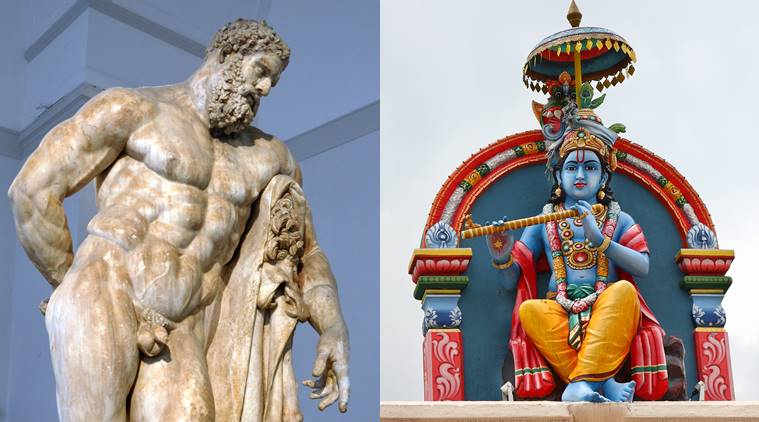 Heracles (left) and Krishna (right) (Source: Wikimedia Commons)
Heracles (left) and Krishna (right) (Source: Wikimedia Commons)